5 Best Grass Types for Your Durham, North Carolina Lawn
BY JUDITH GALLOVA | APRIL 11TH, 2023 | DURHAM, LAWN CARE, NORTH CAROLINADurham abounds with natural beauty all year round. From showy, lush greenery in the summer to dreamy, snow-covered landscapes in the winter, the city has the best of both worlds.
Similarly, both warm- and cool-season grasses can thrive in Durham’s climate. But before you rush out and choose one, it’s important to know their strengths and weaknesses so you can select the best type of grass for your lawn.
In this article:
- 2 Cool-Season Grasses for Durham
- FAQ About Durham Grass Types
- Choose the Right Grass and Plants for Your Durham Landscape
The Difference Between Warm- and Cool-Season Grasses
All grass types are classified as either warm-season or cool-season. Here are their differences:
- Warm-season grasses grow most actively in late spring and summer when temperatures are around 75 to 95 degrees Fahrenheit. They perform best in the Southern half of the United States. Most of these grasses go dormant and brown in the winter.
- Cool-season grasses grow most actively in early spring and fall when temperatures are around 55 to 75 degrees Fahrenheit. They’re well-suited to Northern climates with distinct seasons and cold winters. They often go dormant and brown in the summer, when there’s heat and drought.
As mentioned above, both warm-season and cool-season types of grass will work with a Durham lawn. Read on to learn about some options.
3 Warm-Season Grasses for Durham
1. Centipedegrass
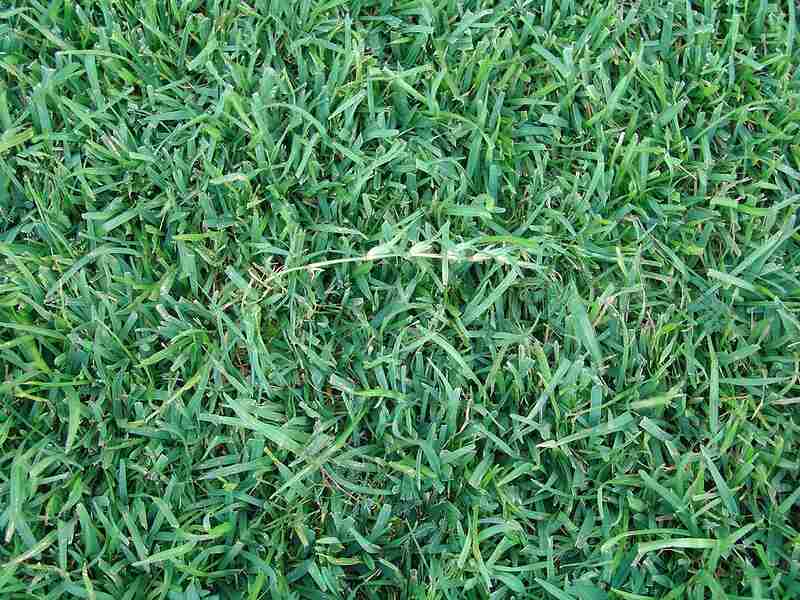
Photo Credit: James Becwar / Wikimedia Commons / CC0
Centipedegrass doesn’t need much mowing, fertilizing, or watering, making it a great option for those who want low-maintenance lawns. At the same time, this light green, medium-textured grass can grow thick in the right environment.
Centipedegrass grows slowly, so if you want to speed up the process, you should use sod or plugs. To keep your centipedegrass looking beautiful, dethatch it every two to three years and don’t apply too much fertilizer.
Classification: Warm-season grass
Spreads by: Stolons
Shade tolerance: Moderate; full sun or partial shade
Drought tolerance: Moderate to high (with the right maintenance)
Foot traffic tolerance: Very low; if damaged, ensure to water promptly
Maintenance needs: Low, and requires less mowing than other grasses because of its slow growth habit
Mowing height: 1.5 to 2 inches, depending on conditions
Potential for disease: Moderate; can be prevented with the right care
2. Bermudagrass
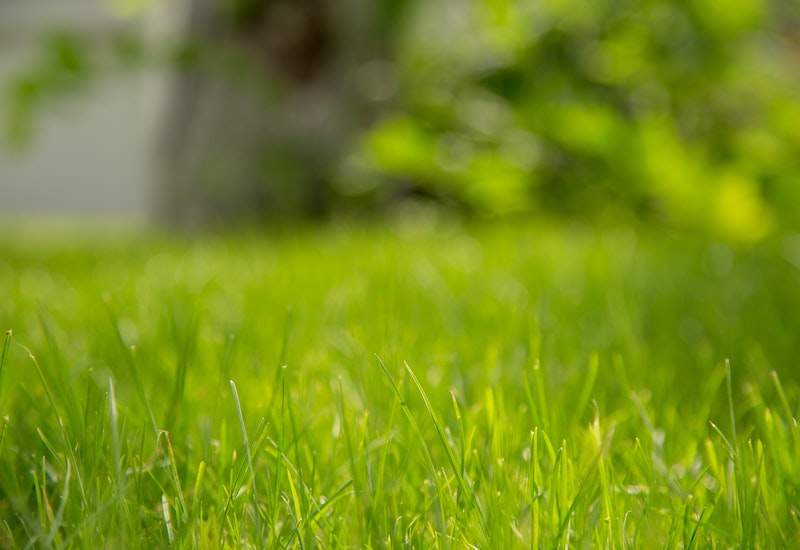
Photo Credit: Pexels
Bermudagrass establishes quickly and handles foot traffic and other stressful conditions well. It spreads rapidly and forms a dense, light-to-dark green turf.
This grass comes in common, improved common, and hybrid cultivars. These cultivars range in texture, maintenance needs, disease resistance, and so forth. You can contact an expert to figure out which Bermudagrass cultivar is right for you.
Classification: Warm-season grass
Spreads by: Stolons and rhizomes
Shade tolerance: Low; some cultivars may have slightly better shade tolerance, but in general, Bermudagrass needs full sun
Drought tolerance: High
Foot traffic tolerance: Highly wear-resistant; if foot traffic damage does occur, Bermudagrass recovers well because of its aggressive rhizomes.
Maintenance needs: Moderate; may need mowing as often as twice per week due to its low mowing height; plan to dethatch regularly
Mowing height: 1 to 2 inches (rotary mower) or 0.75 to 1 inch (reel mower)
Potential for disease: Low, but common diseases include spring dead spots, large patches, and take-all root rot
3. Zoyisiagrass
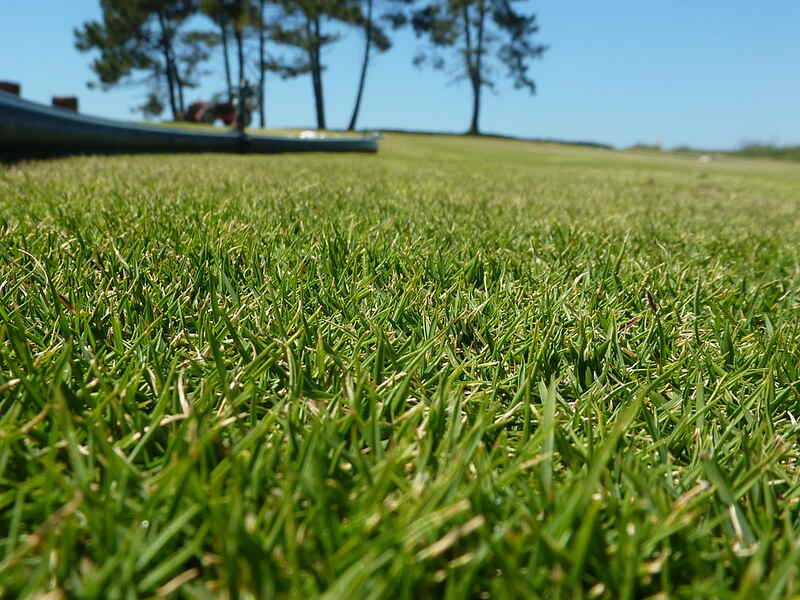
Photo Credit: David-Pierre Mangiapan / Wikimedia Commons / CC BY-SA 3.0
Zoysiagrass is known for its versatility, durability, weed control, and resistance. It can handle stresses like drought and foot traffic. Zoysia is a dense, light-to-medium green carpet of turfgrass that can grow in various soil types. Unlike other warm-season grasses, it can even tolerate moderate shade.
However, zoysia is extremely slow to establish. The best way to grow the grass is to buy sod, which is more expensive. Ensure that you water and fertilize your zoysia as needed and that you remove any built-up thatch.
Classification: Warm-season grass
Spreads by: Stolons and rhizomes
Shade tolerance: Moderate (high for a warm-season grass type)
Drought tolerance: Moderate to high, depending on the cultivar
Foot traffic tolerance: High; dense growth resists damage, and spreading through stolons and rhizomes allows for quick recovery
Maintenance needs: Low to moderate
Mowing height: Typically 1.5 to 2.5 inches depending on cultivar and shade; heights below 1 inch need a reel mower (which is recommended anyway)
Potential for disease: Low to medium, depending on the cultivar
2 Cool-Season Grasses for Durham
1. Tall Fescue
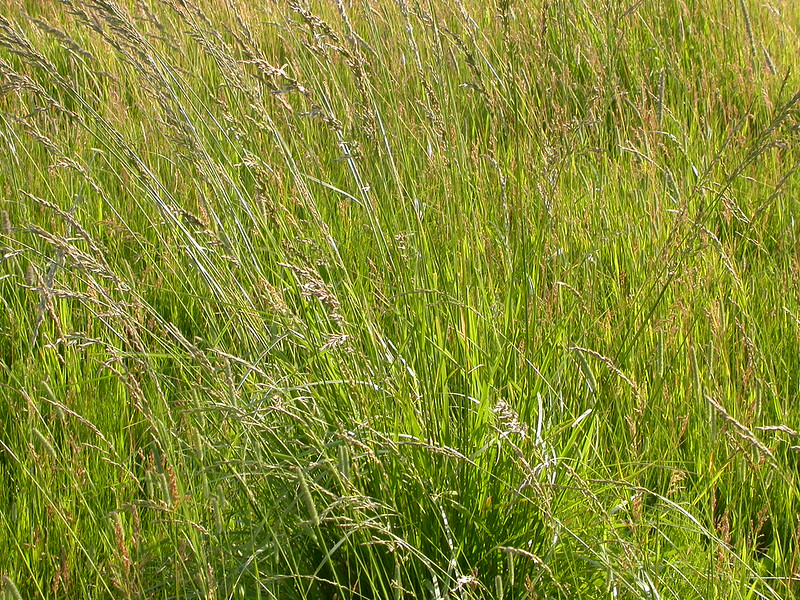
Photo Credit: Matt Lavin / Flickr / CC BY-SA 2.0
Tall fescue is a versatile grass that keeps its medium-dark green color all year when it gets the right care. It can stay in tip-top shape under various kinds of stresses, whether it be heat, foot traffic, weeds, or diseases. Moreover, this grass can grow in either full sun or partial shade.
However, if your tall fescue grass suffers damage, it won’t repair itself, so you’ll need to reseed it. Don’t get cultivar Kentucky-31 for your home lawn. Instead, look for an improved variety, often called turf-type tall fescue. Some experts recommend a blend of two or three tall fescue grasses for better performance.
Classification: Cool-season grass
Spreads by: Bunch-type grass; doesn’t spread well
Shade tolerance: Moderate; full sun to partial shade
Drought tolerance: Moderate to high
Foot traffic tolerance: High, but if bare spots appear, you’ll need to reseed in the fall
Maintenance needs: Relatively low, but requires frequent mowing
Mowing height: 3 to 4 inches
Potential for disease: Low
2. Kentucky Bluegrass Mix
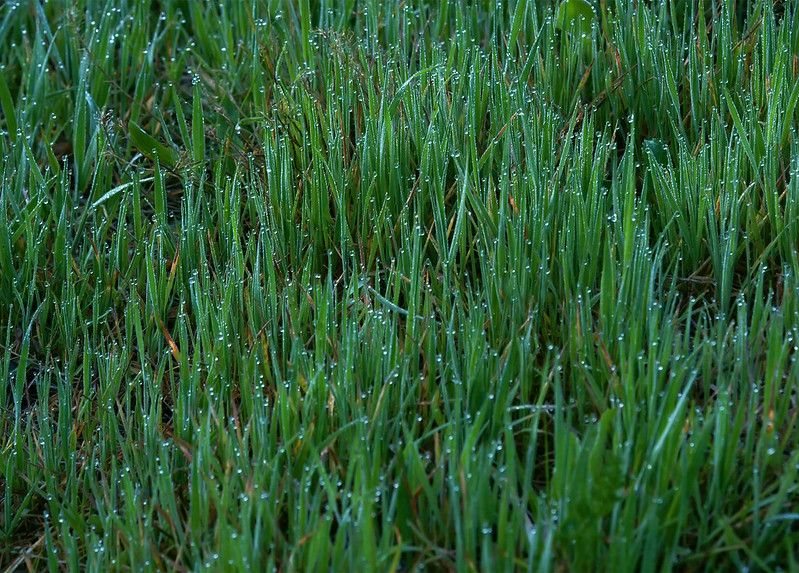
Photo Credit: Ferran Pestaña / Flickr / CC BY-SA 2.0
Even though Kentucky bluegrass grows best in the north of the U.S., it’s used all over the country. It’s a dense, blue-green grass that forms a soft turf and has great ability to repair itself. Although this grass is slow to establish, it can create a lush, uniform lawn if you take care of it.
However, it may have problems handling heat, drought, and bad soil. Mixing Kentucky bluegrass with other grass types makes it more durable throughout the year. It can be mixed with tall fescue and fine fescue, or just tall fescue on its own.
Classification: Cool-season grass
Spreads by: KGB spreads by rhizomes; fine fescues are bunch-type, except creeping red fescues, which have short rhizomes; tall fescues are mostly bunch-type
Shade tolerance: Moderate, depending on the mix; KBG needs full sun, but fine fescues and tall fescues can tolerate partial shade
Drought tolerance: High; may go dormant in summer droughts but will recover quickly once cooler temperatures and rainfall resumes
Foot traffic tolerance: Moderate to high; tall fescue resists traffic damage well; KBG resists traffic damage well in colder months; fine fescues work better in low-traffic areas; if damage occurs, tall fescue and fine fescue require overseeding
Maintenance needs: Moderate to high
Mowing height: Depends on the mix; anywhere from 1.5 to 3.5 inches
Potential for disease: Depends on the mix; KGB has a moderate to high risk for disease, but proper management reduces this risk. Tall fescue and fine fescue grasses are less susceptible to disease.
FAQ About Durham Grass Types
If you’re looking to make your lawn care easier, consider centipedegrass, which is known for being super low-maintenance.
Bermudagrass is a champ at handling foot traffic, but zoysiagrass is also a great option. If you prefer cool-season grasses, tall fescue should be fine either on its own or mixed with Kentucky bluegrass. Choose the grass that best fits your needs.
Centipedegrass and zoysiagrass are both relatively good at handling partial shade.
If you want your grass to stay green all year, pick tall fescue. This grass can keep its color during all seasons if you give it the right care.
Choose the Right Grass and Plants for Your Durham Landscape
Some people prefer a low-maintenance lawn, while others need resistant turfgrass that can withstand heavy foot traffic. Depending on your personal needs and preferences, you have a variety of grasses to choose from. Additionally, if you want a beautiful, easy-care landscape, make sure that you also research the right native plants for your Durham yard.
No matter which grass type and plants you pick, you’ll need to take care of them to one degree or another to make sure they thrive in your yard. But it doesn’t have to take up all your time. Contact local lawn care pros to see how they can help.
Main Photo By: Pixabay